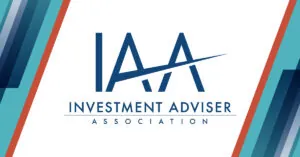This website uses cookies so that we can provide you with the best user experience possible. Cookie information is stored in your browser and performs functions such as recognising you when you return to our website and helping our team to understand which sections of the website you find most interesting and useful.
Active Managers Council Members Discuss “Balancing the Narrative” With Mutual Fund Directors
February 24, 2022
It’s time to clear up the misconceptions around active management, says Ravi Venkataraman, Chair of the Active Managers Council and Global Head of Investment Solutions at MFS. Venkataraman made the comments in a webinar hosted by the Mutual Fund Directors Forum, entitled, “Balance the Narrative II: Broadening the Discussion on Active Management.”
Karen Barr, President & CEO of the Investment Adviser Association (IAA), the parent organization of the Active Managers Council, served as moderator and echoed Venkataraman’s views. “We believe the current media and regulatory narrative is overly negative about active management and fosters a false dichotomy that it’s active vs. passive,” she said. “The reality is that both active and passive management play important roles for clients and investors.”
BALANCING THE NARRATIVE
Venkataraman said it’s time to stop focusing on a few data points and instead take a holistic view of active management. He pointed to the following examples:
- There is too much emphasis on sectors where active management is more challenging and not enough attention paid to the sectors where active management consistently outperforms.
- The media often fails to consider other ways active investing adds value to clients, such as helping clients achieve their objectives and helping clients with ESG investing.
- There is too much attention paid to short-term outcomes when more focus needs to put on the longer-term.
Council Research Task Force Chair and Harding Loevner Vice Chairman Simon Hallett also provided insight. He pointed to “Challenging the Conventional Wisdom on Active Management,” a paper commissioned by the Council from Notre Dame Mendoza School of Business Professor Martijn Cremers that discussed ways investors can identify outperforming active managers before they invest. Those indicators include prior fund performance, active share and whether the manager has ‘skin in the game.’
IMPROVING MARKET EFFICIENCY
Hallett and Venkataraman also discussed the important role active management plays in improving market efficiency which in turn helps investors of all stripes.
Hallett cited findings from “Active Management and the Efficiency of Securities Markets,” the award-winning paper from Professor Russ Wermers of the University of Maryland Smith School of Business. The paper, sponsored by the Council, demonstrates how active management is essential for an efficient market by correcting market anomalies, providing liquidity, acting as a conduit for incorporating news into prices, and serving as a counterbalance to corporate management.
“If everything were passive, all stocks would perform the same based on overall liquidity,” Hallett said. “Active managers enable you to diversify.” He also pointed out that active managers help set the cost of capital, including the relative cost of capital between industries.
MOVING THE NARRATIVE FORWARD
To close the webinar, the panelists emphasized there are many benefits to active management and that it’s time the message is reframed so investors understand the benefits of adding actively managed assets to their portfolios. “The asset management track record in totality, across various asset classes, is solid,” said Venkataraman.
To hear more thoughts from Hallett, Venkataraman and Barr on balancing the narrative around active management, check out the webinar here.


